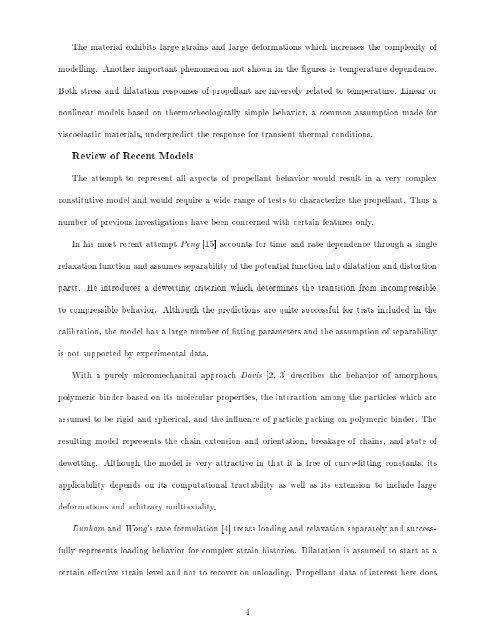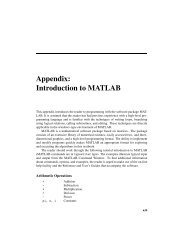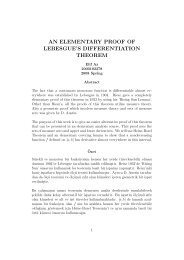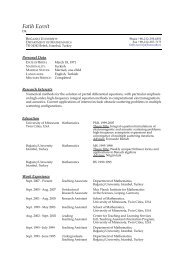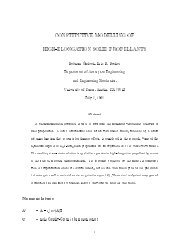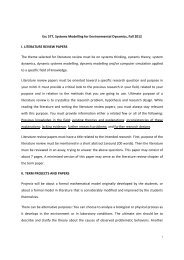CONSTITUTIVE EQUATIONS FOR SOLID PROPELLANTS
CONSTITUTIVE EQUATIONS FOR SOLID PROPELLANTS
CONSTITUTIVE EQUATIONS FOR SOLID PROPELLANTS
Create successful ePaper yourself
Turn your PDF publications into a flip-book with our unique Google optimized e-Paper software.
The material exhibits large strains and large deformations which increases the complexity of<br />
modelling. Another important phenomenon not shown in the gures is temperature dependence.<br />
Both stress and dilatation responses of propellant are inversely related to temperature. Linear or<br />
nonlinear models based on thermorheologically simple behavior, a common assumption made for<br />
viscoelastic materials, underpredict the response for transient thermal conditions.<br />
Review of Recent Models<br />
The attempt to represent all aspects of propellant behavior would result in a very complex<br />
constitutive model and would require a wide range of tests to characterize the propellant. Thus a<br />
number of previous investigations have been concerned with certain features only.<br />
In his most recent attempt Peng [15] accounts for time and rate dependence through a single<br />
relaxation function and assumes separability of the potential function into dilatation and distortion<br />
parts. He introduces a dewetting criterion which determines the transition from incompressible<br />
to compressible behavior. Although the predictions are quite successful for tests included in the<br />
calibration, the model has a large number of tting parameters and the assumption of separability<br />
is not supported by experimental data.<br />
With a purely micromechanical approach Davis [2, 3] describes the behavior of amorphous<br />
polymeric binder based on its molecular properties, the interaction among the particles which are<br />
assumed to be rigid and spherical, and the inuence of particle packing on polymeric binder. The<br />
resulting model represents the chain extension and orientation, breakage of chains, and state of<br />
dewetting. Although the model is very attractive in that it is free of curve-tting constants, its<br />
applicability depends on its computational tractability aswell as its extension to include large<br />
deformations and arbitrary multiaxiality.<br />
Dunham and Wong's rate formulation [4] treats loading and relaxation separately and successfully<br />
represents loading behavior for complex strain histories. Dilatation is assumed to start at a<br />
certain eective strain level and not to recover on unloading. Propellant data of interest here does<br />
4


